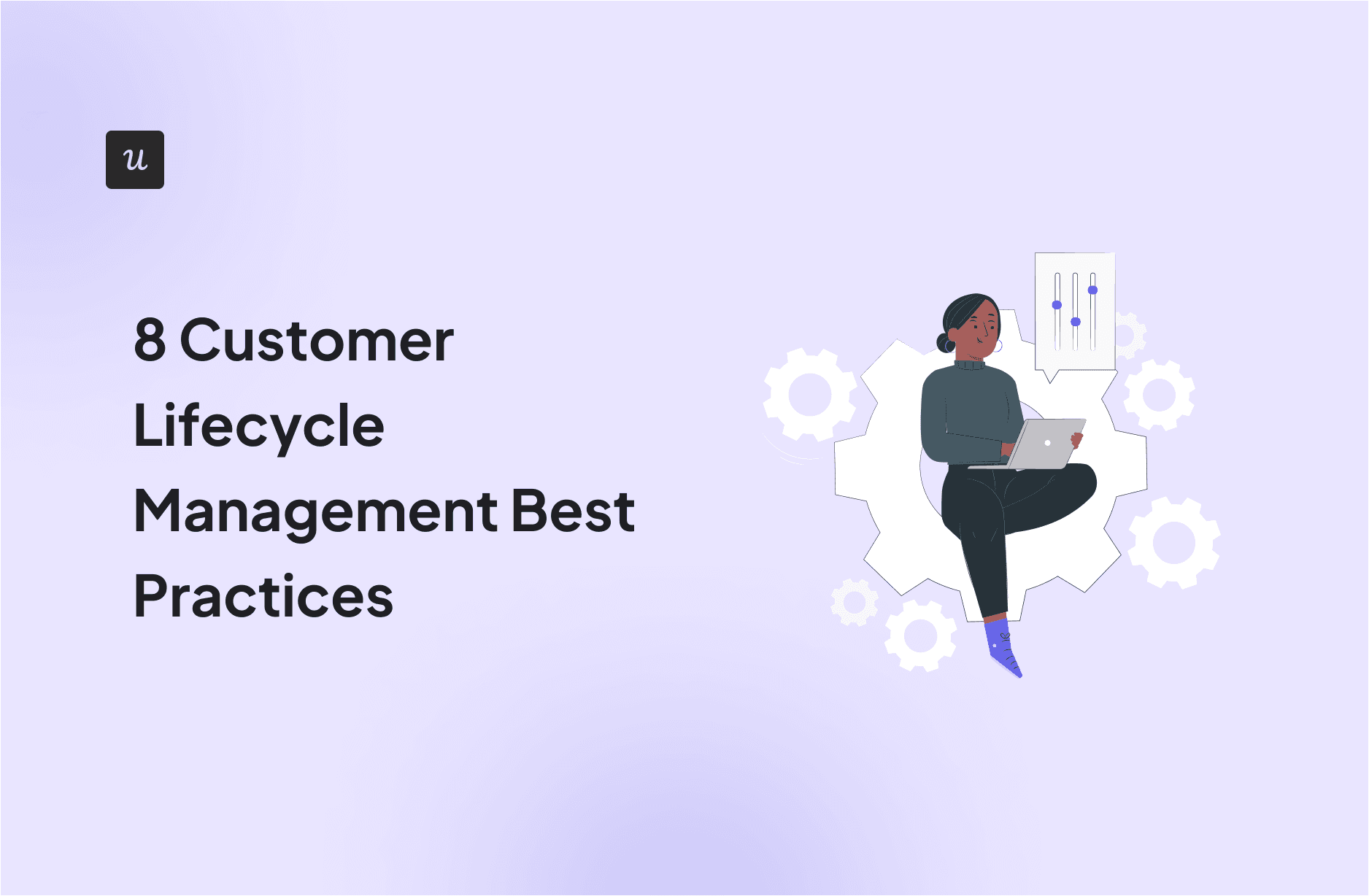
Following customer lifecycle management best practices can lead your company to retain more users and increase customer lifetime value.
But what are these best practices and how can you implement them?
Let’s explore customer lifecycle management (CLM), its phases, and the best practices you can apply in SaaS without coding!
How do you currently personalize the new user experience?
Try Userpilot Now
See Why 1,000+ Teams Choose Userpilot

What is customer lifecycle management?
Customer lifecycle management (CLM) is a strategic approach for tracking, analyzing, and optimizing customer interactions throughout their entire relationship with your company.
This involves tracking and optimizing every stage of the customer journey—from acquisition to post-sale support and retention—to enhance customer satisfaction, increase customer loyalty, and maximize lifetime value.
Stages of the customer lifecycle management process
The customer lifecycle management process has a structure that starts with understanding each part of the cycle. Each stage focuses on different aspects of the customer experience, and they include:
- Acquisition: This is the stage where potential customers become new users. It involves marketing campaigns, promotions, and outreach efforts to create awareness and generate leads.
- Activation: When new users become active users through onboarding processes or live demos. The goal is to make users realize the value of your product.
- Adoption: Where customers start using your product regularly. The focus here is on enhancing the customer experience and providing proactive support.
- Retention: This is when customers stay engaged and satisfied over the long term. This involves continuous customer support, updates, and secondary onboarding.
- Expansion and Advocacy: Here, customers are encouraged to purchase additional products through upsells, and share their positive experiences with others with referral programs and communities
8 Best practices when creating a customer lifecycle management strategy
That said, let’s go over 8 best practices and see how you can apply them in your customer lifecycle management strategies:
Personalize customer experience from the start
Personalization opens the door to driving more customer success and increasing customer retention—leading to a smoother lifecycle.
In fact, according to a McKinsey study, 76 to 78% of consumers are more likely to purchase, recommend, and make repeat purchases from companies that personalize the customer experience.
In SaaS, this could mean presenting features that a CMO would find valuable, or automatically skipping others that an engineer might not need.
How to implement it?
The best way to personalize CX is by segmenting your user base and designing a relevant product experience for each.
For instance, you can use a welcome survey to gather information such as the user’s industry, their role within their organization, or their main motivation for using your product. Then craft an onboarding path that addresses their specific jobs-to-be-done (JTBD) and responsibilities.
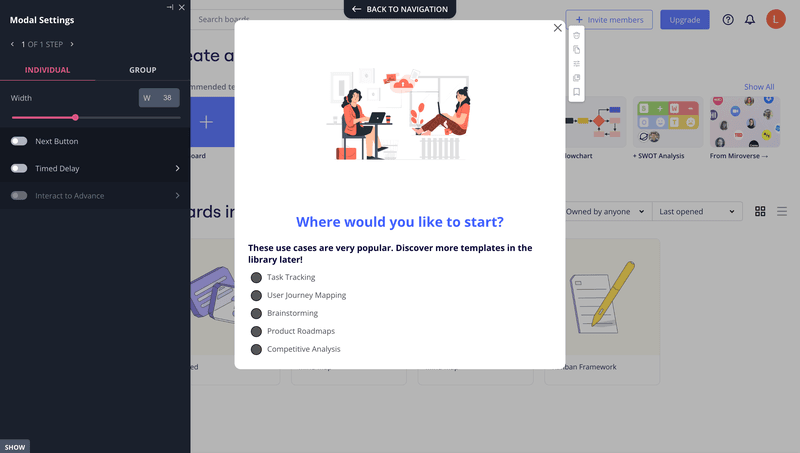
Creating a welcome survey with Userpilot.
Enhance customer onboarding with interactive guidance
In-app guidance is a very engaging way to onboard users effectively. It helps users understand your product better and enhances their experience by encouraging exploration.
So instead of showing a generic product tour that users are likely to skip, you can implement an interactive walkthrough to guide users step-by-step with progressive onboarding.
How to implement it?
To do this, identify the features that are core to your product and align with your user’s jobs to be done. Then use a no-code builder (like Userpilot) to create UI patterns (tooltips, modals, hotspots, etc) to educate customers about each of these features. And finally, set them up to pop out when a customer starts engaging with said feature.
For example, Groupize used Userpilot to gamify their onboarding by creating a Groupize Interactive Assistant—G.G.—ready to help Groupize users through the app’s interactive elements.
This assistant offers help through onboarding tours, step-by-step checklists, as well as live chat, LinkedIn page, and email—getting users through the onboarding in an interactive way.
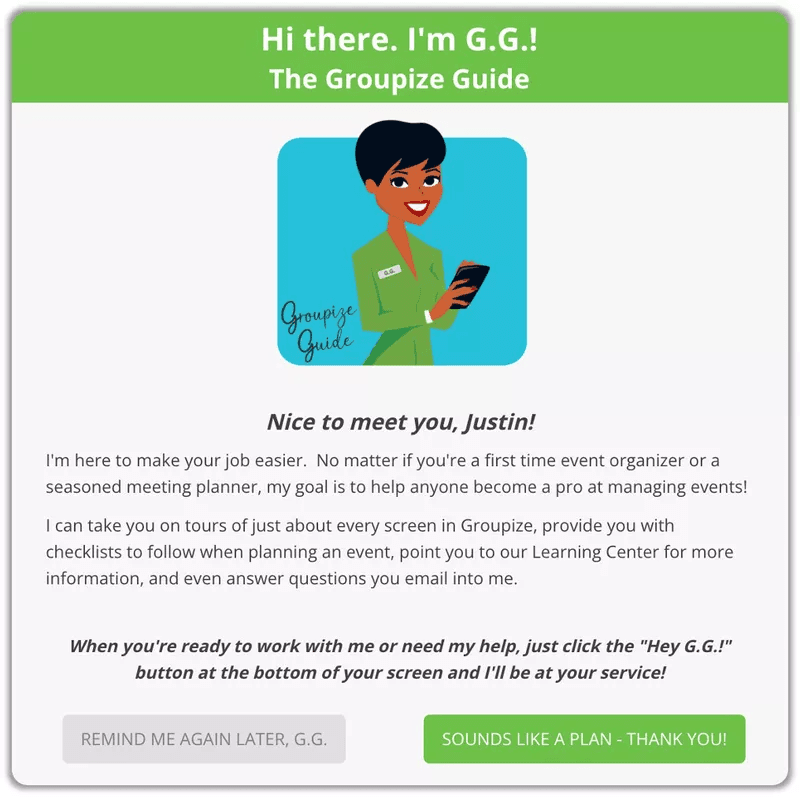
Segment existing customers for better customer relationship management
Customer segmentation is not only key for personalization, it’s also a medium for monitoring, analyzing, and managing your user’s lifecycle.
These segments can be created based on different criteria, this can include:
- Demographics.
- Survey responses.
- In-app behavior and activity.
- JTBDs.
- Journey stage.
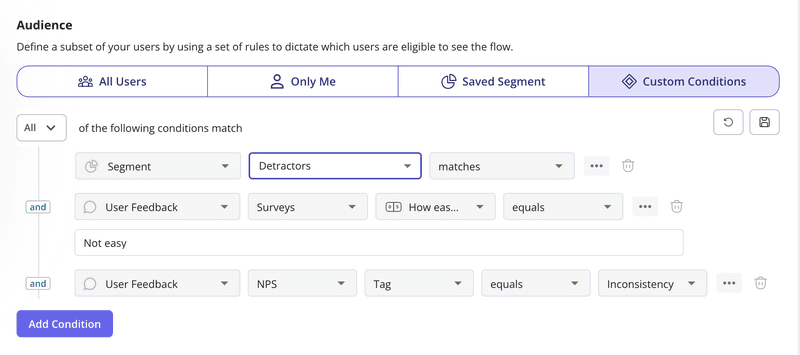
How to implement it?
There are many ways to segment users. First of all, you need a tool like Userpilot to segment users, then decide what criteria (NPS responses, in-app behavior, etc) you need to perform your strategy. This can involve:
- Defining detractors who replied negatively to an NPS survey, and then create targeted campaigns for them.
- Segmenting users who skipped the onboarding process and are now stuck, then design an in-app flow to try to guide them again and re-engage them.
- Track behavioral data of active free trial users, then set up an in-app upgrade message to trigger when they reach the usage limit.
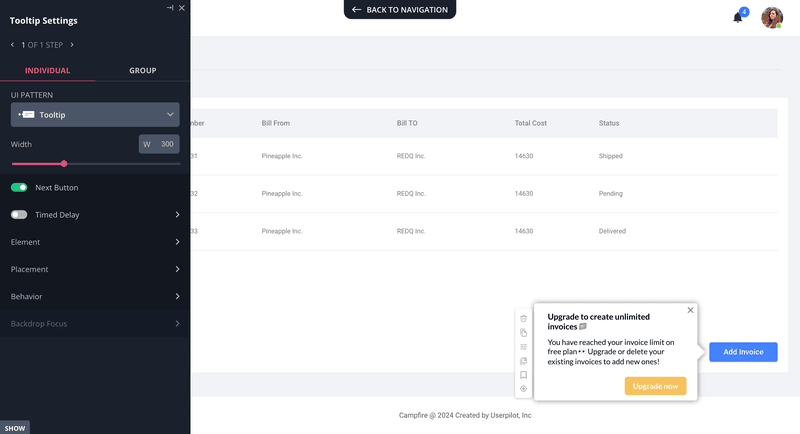
Offer self-service options to enhance customer experience
Self-service support allows users to learn at their own pace, access relevant resources, and troubleshoot issues independently.
It prevents users from leaving your app to solve their issues and experiencing friction, and as a result, it ends up elevating the customer experience.
How to implement it?
A great way to offer self-service support is through an in-app resource center, as it serves as a comprehensive repository of help content for new customers.
To create an effective knowledge base:
- Identify common issues that make customers drop off and disengage.
- Survey your users, review your support tickets, and examine your usage data to see what’s causing friction and pushing customers away.
- Create help resources in different formats to directly tackle these challenges. It can include FAQs, tutorial videos, step-by-step guides, or help articles.
- Organize your resources in content modules so users can find resources that are relevant to them.
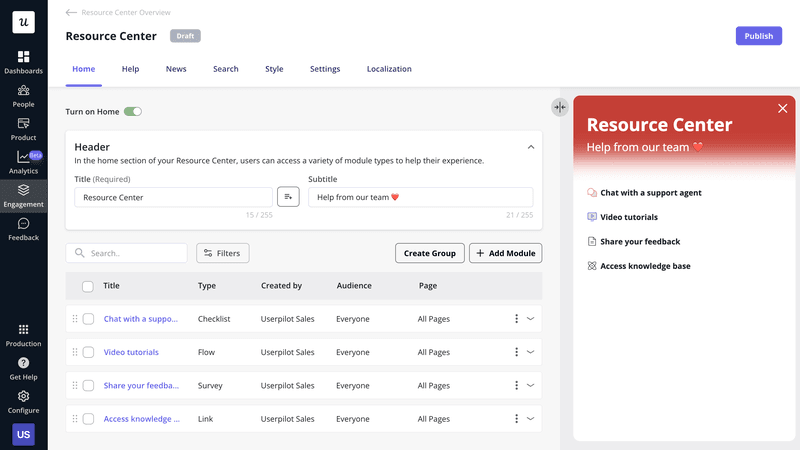
Collect feedback across the customer journey
The best way to manage the customer lifecycle is by communicating with users throughout their journey and getting customer feedback.
This involves segmenting your users and targeting in-app surveys such as CES (customer effort score), CSAT, and NPS surveys to understand their points of view.
As a result, you can understand their problems, what they’re expecting to achieve with your product, and where your service excels or falls short.
How to implement it?
In order to collect feedback that’s the most accurate and honest, it’s important to trigger the right survey at the right time and with the right user.
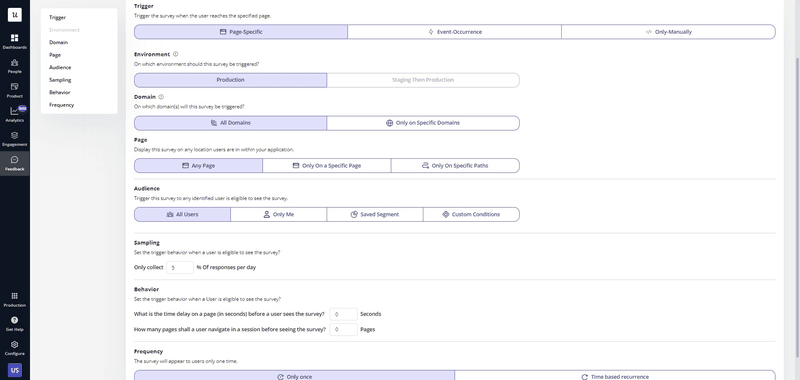
One way is to trigger these surveys after every customer interaction/touchpoint to understand their experience. For example:
- CES survey when a user first interacts with a new feature.
- Satisfaction survey for rating the onboarding experience after a user has completed it.
- CSAT survey after a customer service interaction.
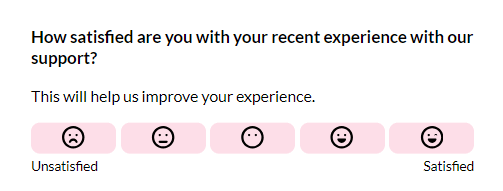
This lets you collect feedback that’s relevant to their specific needs, iterate your customer lifecycle management strategy, and close the feedback loop.
Leverage customer data to offer proactive customer service
Customer data is not only a great way to understand your audience’s pain points, needs, and desires. It’s also a useful way to provide proactive customer service.
This is because you can analyze what’s causing friction, address it, and prevent users from having to search online or reach out to your customer support team or sales team.
As a result, you can solve problems before they happen so users don’t need to experience friction.
How to implement it?
You can offer proactive help depending on your feedback collection method, for instance:
- Using funnel analysis to see if there’s a substantial drop in engagement during the onboarding process, and then make it more user-friendly or interactive.
- Sending CES surveys to understand what features are more challenging to use, then trigger in-app guidance so users won’t feel the need to look for help.
- Measuring feature usage to see if there’s a core feature with low engagement, then work on introducing it to users through hotspots, checklists, or an enhanced UI.
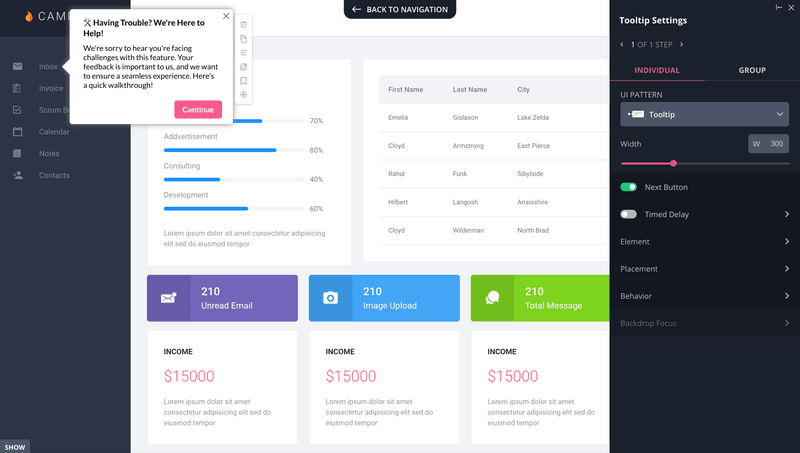
Use product analytics to drive customer retention
Measuring your product performance is fundamental for customer lifecycle management.
This process involves using product analytics to track user behavior, visualize the customer lifecycle map, and pay attention to key engagement metrics like churn rate, session length, and user activity.
With proper analytics, you can identify friction points in the user journey, understand their patterns, and design a product experience that focuses on retaining customers.
How to implement it?
For CLM, you can perform a customer lifecycle analysis to get a wide view of your user’s journey and find actionable insights.
For this, you need to install an analytics tool like Amplitude or Userpilot that can support different types of reports and dashboards, including:
- Funnel analysis. A report that illustrates how users advance through the conversion funnel.
- Path analysis. Which creates a visual on how users navigate through your product, showing their “path”.
- Trend analysis. Analyzes the trends in product usage and conversions in the last months.
- Retention cohorts. Tracks how multiple user cohorts have stayed with your product over the months.
With these reports you can, for example, figure out the specific path that your loyal customers took (i.e. the happy path) and design the product experience to replicate the same path for other users.
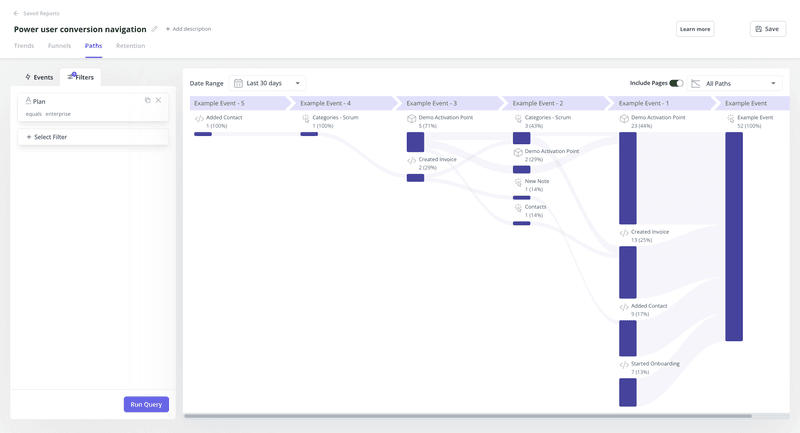
Incentivize loyal customers to encourage product advocacy
To expand brand awareness and word-of-mouth, you can set up a loyalty program where customers are awarded points each time they take a desired action, and those points can be exchanged for credits, free months, etc.
These desired actions can involve:
- Following you on socials.
- Making a purchase.
- Writing a review.
- Completing surveys.
- Bringing referrals.
How to implement it?
One way to implement this is to reward your existing users for writing reviews or bringing in referrals through word-of-mouth.
For this, you can trigger an in-app message to promoters (i.e. users who responded to NPS surveys with a score of 9 or more) asking them to write a G2 review in exchange for an Amazon gift card.
As a result, you’ll be able to gather more reviews and expand your brand awareness automatically.
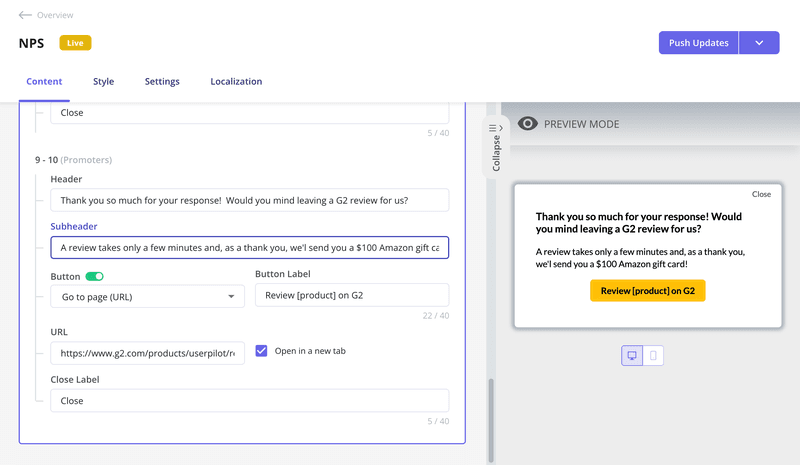
Conclusion
When implemented well, these customer lifecycle management best practices will go a long way to retain users and support your business’s bottom line.
From personalizing the product experience, creating an in-app resource center, and providing proactive customer service, all you need is the right tools to implement them without coding.
Interested in improving your customer lifecycle management? Book a Userpilot demo to see how you can streamline the whole customer lifecycle!







